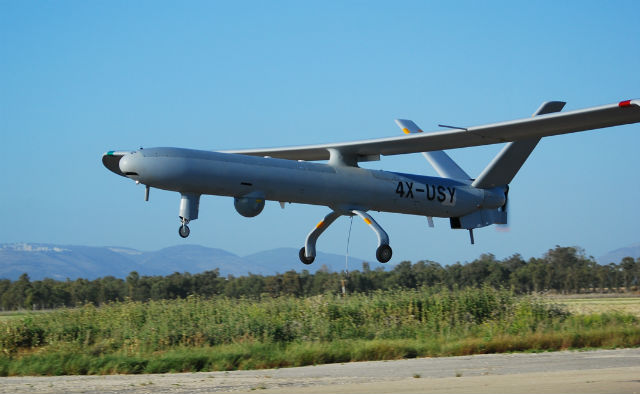China and Iran are further integrating unmanned air vehicles (UAVs) into their inventories as both move towards including the technology in military drills for the first time.
Local news agencies in China and the Middle East have reported that both nations are ramping up the use of UAVs – the designs of which remain somewhat a mystery to the West – with China having already conducted live UAV firings and Iran planning on doing so from October.
The proliferation of UAV development has been apparent in China and Iran for some time, and although China displays UAV technology at regional air shows, relatively little is known about the capabilities that either possess.
China conducted live missile firing trials from an undisclosed UAV during the Shanghai Cooperation Organization (SCO) Peace Mission 2014 multinational drill that began on 24 August in Inner Mongolia, says China’s official Xinhua news agency, and has “yet to miss a shot”.
“The drone, tasked with surveillance, reconnaissance and ground attacks, will play a vital role in fighting against terrorism,” says Shen Jinke, spokesman for the Chinese air force.
China’s indigenous-built WZ-10 and WZ-19 attack helicopters participated in the testing that is expected to finish on 29 August.
Also involved in the drills in addition to China are Russia, Kazakhstan, Kyrgyzstan and Tajikistan, while the SCO is made up of these five nations plus Uzbekistan. Belarus, Turkey and Sri Lanka are “dialogue partners”, Xinhua says, while Afghanistan, India, Mongolia and Pakistan are observers, as is Iran.
According to Azerbaijani news reports, Iran itself is looking to include UAVs in its military drills. The Iranian army is planning to include them in its military exercises that are due to take place some time between 23 October and 21 November at an undisclosed location.
Iran claims to have reverse engineered foreign UAVs that it has shot down. Though released photographs remain unconfirmed by Western experts, those claims have been backed up by Iran's apparent development of aircraft bearing strong resemblances to the Lockheed Martin RQ-170 Sentinel and the Israel Aerospace Industries Heron, which Iran calls the Fotros.
The Islamic Republic News Agency (IRNA), meanwhile, reported on 24 August that an anti-aircraft battery of the Iranian Revolutionary Guard Corps (IRGC) had “shot down an Israeli spy drone over Iranian territory”.
It was shot down over the Natanz nuclear plant, and although the particular model was not disclosed, it is believed to be the Elbit Systems Hermes 450 (pictured).

Elbit Systems
Brigadier General Hossein Salami, Lieutenant Commander of the IRGC, said that despite the UAV having been spotted when it crossed the border, it was allowed to cross to see what its intentions were, IRNA says.
Salami said that Iran would not reverse engineer the UAV, although it has the power to do so.
IRNA later reported that the Hermes had originated in Azerbaijan, although the operator of the UAV has still not been confirmed and Israel claims it is not its system.
Israeli experts say that the Hermes 450 was not designed for long flights such as the distance between Israel and Iran: “This is a tactical UAV which is currently highly active in the sky over Gaza,” one of the experts says.
They added that this UAV cannot perform a round trip to Iran – only the distance to Iran – and this would only be possible with a relatively light and dedicated payload, which would limit its performance.
Meanwhile on 27 August, an Israeli UAV reportedly crashed in Iraq near Baghdad airport and was quickly recovered by US personnel on the ground, according to a story on the Lebanese-based Al-Mayadeen satellite news channel.
The TV station quotes unnamed Iraqi sources that claim that the US embassy in Iraq sent a team to collect the debris, although the reports did not identify the UAV type.
Additional reporting by Arie Egozi
Source: FlightGlobal.com



















